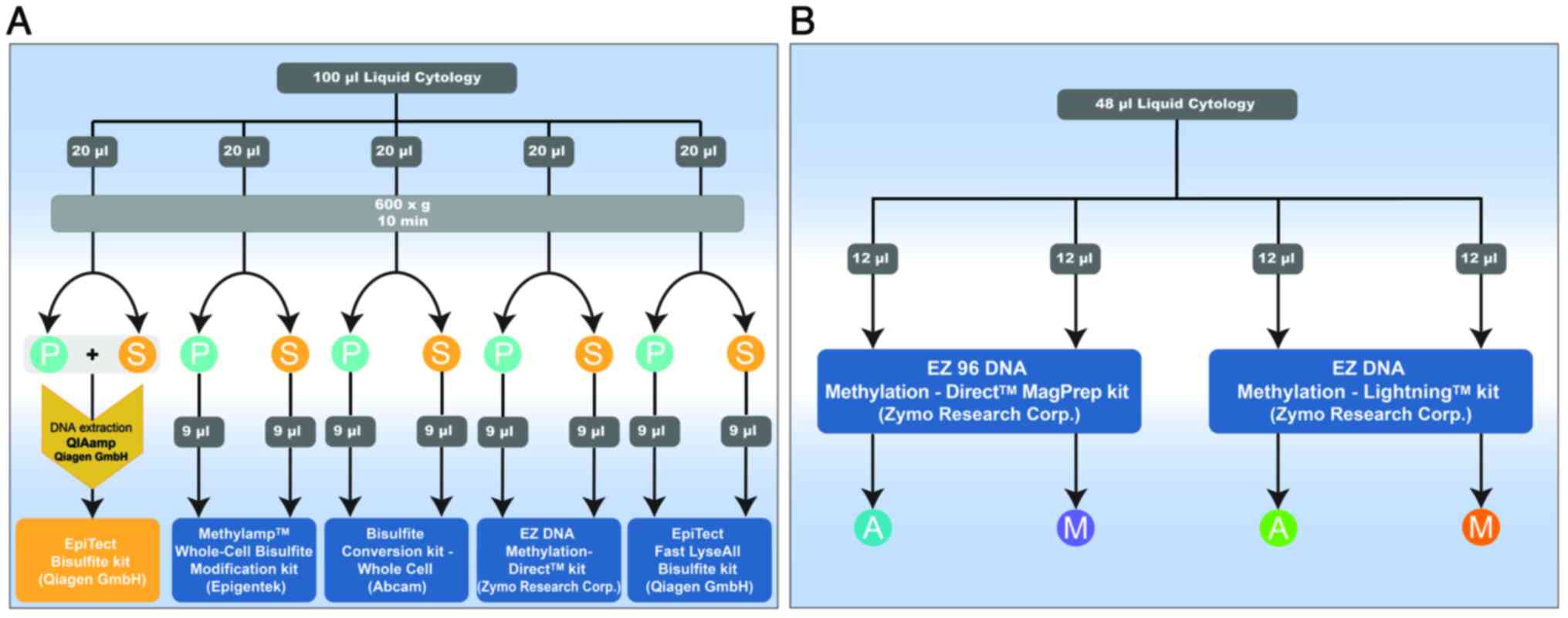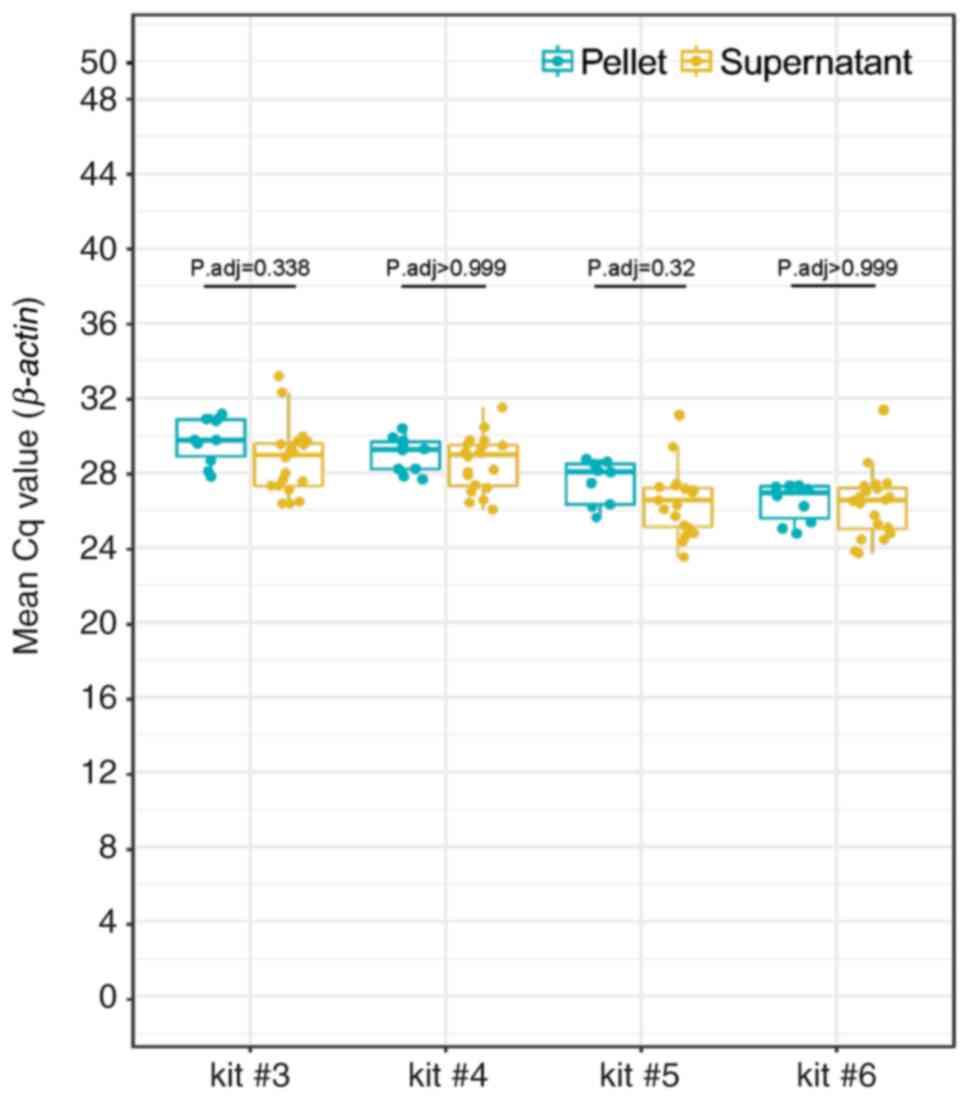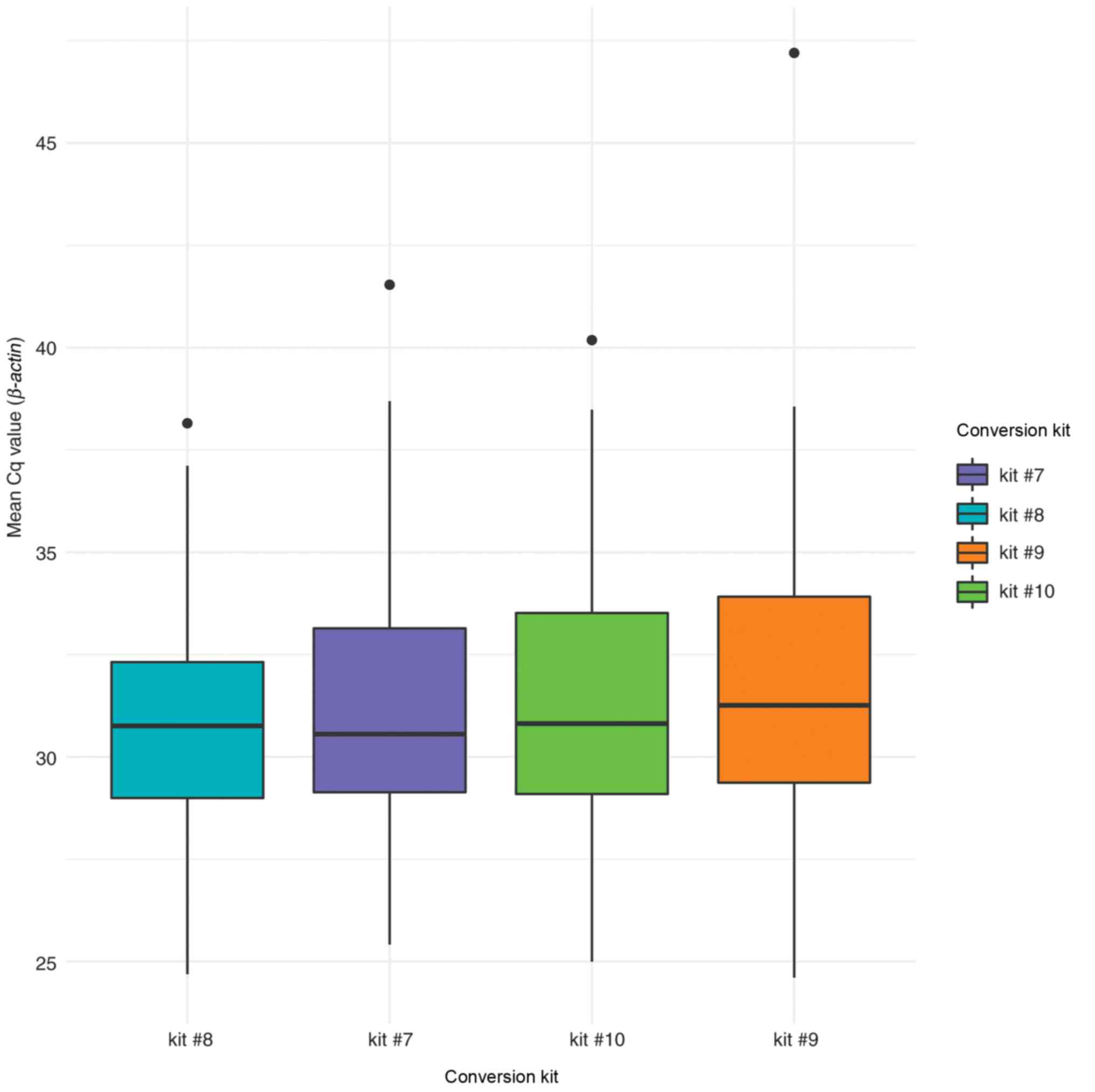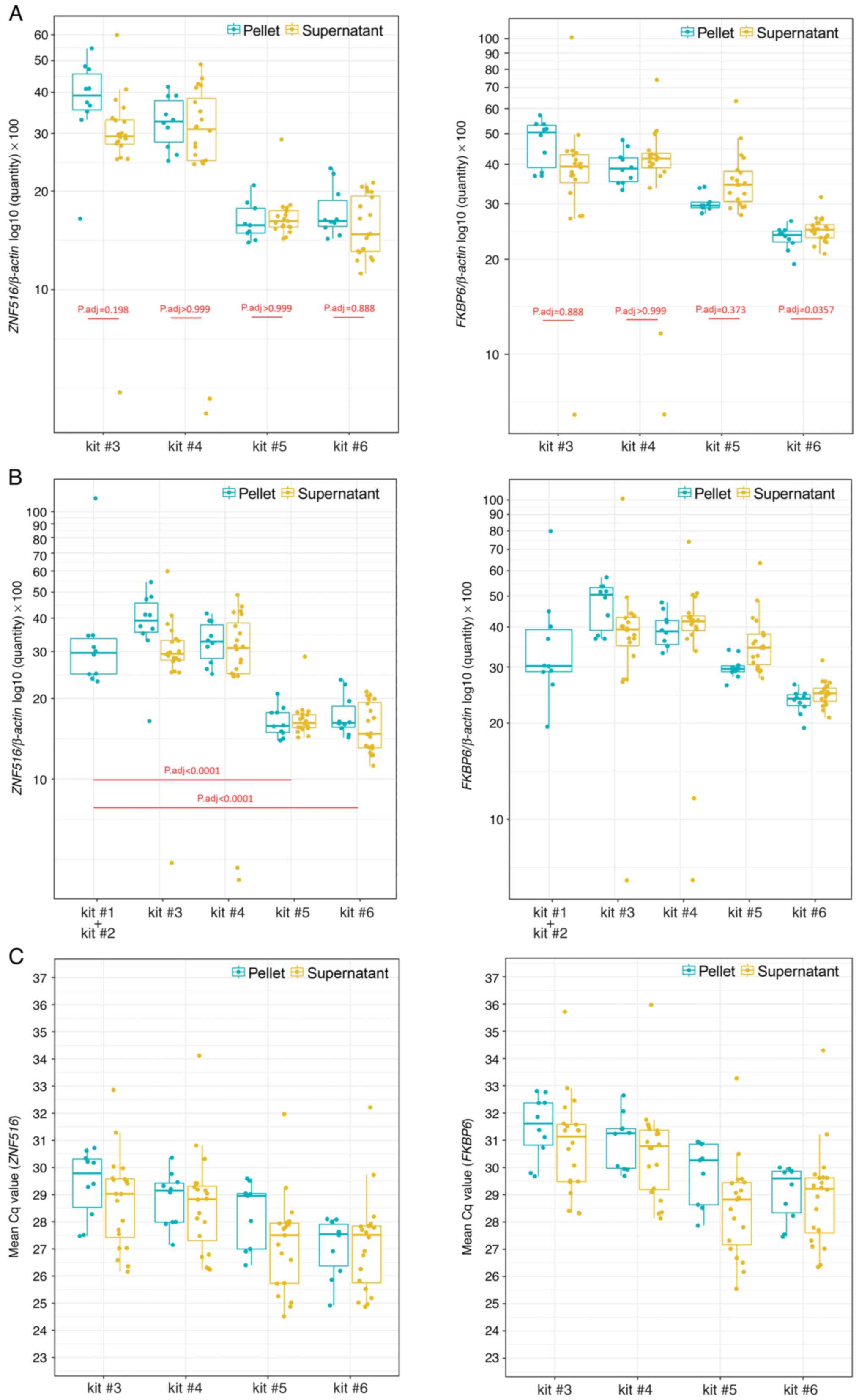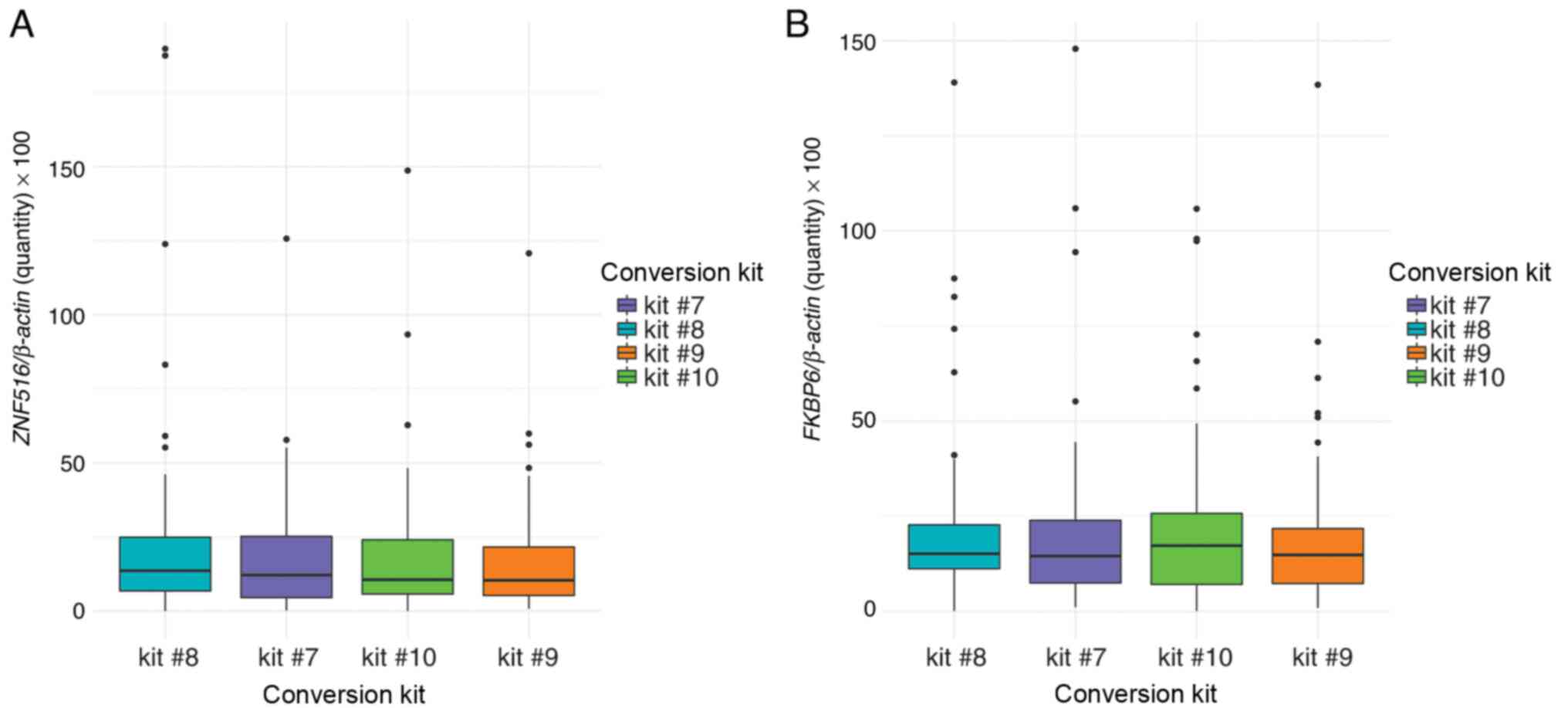|
1
|
Pashayan N and Pharoah PDP: The challenge
of early detection in cancer. Science. 368:589–590. 2020.PubMed/NCBI View Article : Google Scholar
|
|
2
|
Pepe MS, Etzioni R, Feng Z, Potter JD,
Thompson ML, Thornquist M, Winget M and Yasui Y: Phases of
biomarker development for early detection of cancer. J Natl Cancer
Inst. 93:1054–1061. 2001.PubMed/NCBI View Article : Google Scholar
|
|
3
|
Rubinstein WS, Patriotis C, Dickherber A,
Han PKJ, Katki HA, LeeVan E, Pinsky PF, Prorok PC, Skarlupka AL,
Temkin SM, et al: Cancer screening with multicancer detection
tests: A translational science review. CA Cancer J Clin: Mar 22,
2024 (Epub ahead of print).
|
|
4
|
Baran E, Lee M, Aviv S, Weiss J,
Pettengell C, Karam I, Bayley A, Poon I, Chan KKW, Parmar A, et al:
Oropharyngeal cancer staging health record extraction using
artificial intelligence. JAMA Otolaryngol Head Neck Surg: May 16,
2024 (Epub ahead of print).
|
|
5
|
Virdee PS, Collins KK, Friedemann Smith C,
Yang X, Zhu S, Roberts SE, Roberts N, Oke JL, Bankhead C, Perera R,
et al: The association between blood test trends and undiagnosed
cancer: A systematic review and critical appraisal. Cancers
(Basel). 16(1692)2024.PubMed/NCBI View Article : Google Scholar
|
|
6
|
Menon U, Gentry-Maharaj A, Burnell M,
Singh N, Ryan A, Karpinskyj C, Carlino G, Taylor J, Massingham SK,
Raikou M, et al: Ovarian cancer population screening and mortality
after long-term follow-up in the UK Collaborative Trial of Ovarian
Cancer Screening (UKCTOCS): A randomised controlled trial. Lancet.
397:2182–2193. 2021.PubMed/NCBI View Article : Google Scholar
|
|
7
|
Adcock R, Nedjai B, Lorincz AT,
Scibior-Bentkowska D, Banwait R, Torrez-Martinez N, Robertson M,
Cuzick J and Wheeler CM: New Mexico HPV Pap Registry Steering
Committee. DNA methylation testing with S5 for triage of high-risk
HPV positive women. Int J Cancer. 151:993–1004. 2022.PubMed/NCBI View Article : Google Scholar
|
|
8
|
Hernandez-Lopez R, Lorincz AT,
Torres-Ibarra L, Reuter C, Scibior-Bentkowska D, Warman R, Nedjai
B, Mendiola-Pastrana I, León-Maldonado L, Rivera-Paredez B, et al:
Methylation estimates the risk of precancer in HPV-infected women
with discrepant results between cytology and HPV16/18 genotyping.
Clin Epigenetics. 11(140)2019.PubMed/NCBI View Article : Google Scholar
|
|
9
|
Gilham C, Nedjai B, Scibior-Bentkowska D,
Reuter C, Banwait R, Brentnall AR, Cuzick J, Peto J and Lorincz AT:
Long-term prediction by DNA methylation of high-grade cervical
intraepithelial neoplasia: Results of the ARTISTIC cohort. Int J
Cancer. 155:81–92. 2024.PubMed/NCBI View Article : Google Scholar
|
|
10
|
Ramirez AT, Sanchez GI, Nedjai B, Agudelo
MC, Brentnall AR, Cuschieri K, Castañeda KM, Cuzick J and Lorincz
AT: ASC-US-COL Trial Group. Effective methylation triage of HPV
positive women with abnormal cytology in a middle-income country.
Int J Cancer. 148:1383–1393. 2021.PubMed/NCBI View Article : Google Scholar
|
|
11
|
Kremer WW, Steenbergen R, Heideman D,
Kenter GG and Meijer C: The use of host cell DNA methylation
analysis in the detection and management of women with advanced
cervical intraepithelial neoplasia: A review. BJOG. 128:504–514.
2021.PubMed/NCBI View Article : Google Scholar
|
|
12
|
Sung H, Ferlay J, Siegel RL, Laversanne M,
Soerjomataram I, Jemal A and Bray F: Global Cancer Statistics 2020:
GLOBOCAN estimates of incidence and mortality worldwide for 36
cancers in 185 countries. CA Cancer J Clin. 71:209–249.
2021.PubMed/NCBI View Article : Google Scholar
|
|
13
|
Wright TC Jr and Kuhn L: Alternative
approaches to cervical cancer screening for developing countries.
Best Pract Res Clin Obstet Gynaecol. 26:197–208. 2012.PubMed/NCBI View Article : Google Scholar
|
|
14
|
Siegel RL, Giaquinto AN and Jemal A:
Cancer statistics, 2024. CA Cancer J Clin. 74:12–49.
2024.PubMed/NCBI View Article : Google Scholar
|
|
15
|
Chen L, Qiu X, Zhang N, Wang Y, Wang M, Li
D, Wang L and Du Y: APOBEC-mediated genomic alterations link
immunity and viral infection during human papillomavirus-driven
cervical carcinogenesis. Biosci Trends. 11:383–388. 2017.PubMed/NCBI View Article : Google Scholar
|
|
16
|
Sen P, Ganguly P and Ganguly N: Modulation
of DNA methylation by human papillomavirus E6 and E7 oncoproteins
in cervical cancer. Oncol Lett. 15:11–22. 2018.PubMed/NCBI View Article : Google Scholar
|
|
17
|
McCredie MR, Sharples KJ, Paul C, Baranyai
J, Medley G, Jones RW and Skegg DC: Natural history of cervical
neoplasia and risk of invasive cancer in women with cervical
intraepithelial neoplasia 3: A retrospective cohort study. Lancet
Oncol. 9:425–434. 2008.PubMed/NCBI View Article : Google Scholar
|
|
18
|
U.S. USCSWG: Cancer Statistics Data
Visualizations Tool, based on 2020 submission data (1999-2018):
U.S. Department of Health and Human Services, Centers for Disease
Control and Prevention and National Cancer Institute; Available
from: www.cdc.gov/cancer/dataviz. Released in
June 2021.
|
|
19
|
Nene B, Jayant K, Arrossi S, Shastri S,
Budukh A, Hingmire S, Muwonge R, Malvi S, Dinshaw K and
Sankaranarayanan R: Determinants of womens participation in
cervical cancer screening trial, Maharashtra, India. Bull World
Health Organ. 85:264–272. 2007.PubMed/NCBI View Article : Google Scholar
|
|
20
|
Bhatia R, Kavanagh K, Cubie HA, Serrano I,
Wennington H, Hopkins M, Pan J, Pollock KG, Palmer TJ and Cuschieri
K: Use of HPV testing for cervical screening in vaccinated
women-Insights from the SHEVa (Scottish HPV Prevalence in
Vaccinated Women) study. Int J Cancer. 138:2922–2931.
2016.PubMed/NCBI View Article : Google Scholar
|
|
21
|
Bonde J, Floore A, Ejegod D, Vink FJ,
Hesselink A, van de Ven PM, Valenčak AO, Pedersen H, Doorn S, Quint
WG, et al: Methylation markers FAM19A4 and miR124-2 as triage
strategy for primary human papillomavirus screen positive women: A
large European multicenter study. Int J Cancer. 148:396–405.
2021.PubMed/NCBI View Article : Google Scholar
|
|
22
|
Cuschieri K, Ronco G, Lorincz A, Smith L,
Ogilvie G, Mirabello L, Carozzi F, Cubie H, Wentzensen N, Snijders
P, et al: Eurogin roadmap 2017: Triage strategies for the
management of HPV-positive women in cervical screening programs.
Int J Cancer. 143:735–745. 2018.PubMed/NCBI View Article : Google Scholar
|
|
23
|
Cai S, Yu X, Gu Z, Yang Q, Wen B, Sheng J
and Guan R: A 10-gene prognostic methylation signature for stage
I-III cervical cancer. Arch Gynecol Obstet. 301:1275–1287.
2020.PubMed/NCBI View Article : Google Scholar
|
|
24
|
Dick S, Kremer WW, De Strooper LMA,
Lissenberg-Witte BI, Steenbergen RDM, Meijer CJLM, Berkhof J and
Heideman DAM: Long-term CIN3+ risk of HPV positive women after
triage with FAM19A4/miR124-2 methylation analysis. Gynecol Oncol.
154:368–373. 2019.PubMed/NCBI View Article : Google Scholar
|
|
25
|
Xu W, Xu M, Wang L, Zhou W, Xiang R, Shi
Y, Zhang Y and Piao Y: Integrative analysis of DNA methylation and
gene expression identified cervical cancer-specific diagnostic
biomarkers. Signal Transduct Target Ther. 4(55)2019.PubMed/NCBI View Article : Google Scholar
|
|
26
|
Locke WJ, Guanzon D, Ma C, Liew YJ,
Duesing KR, Fung KYC and Ross JP: DNA methylation cancer
biomarkers: Translation to the clinic. Front Genet.
10(1150)2019.PubMed/NCBI View Article : Google Scholar
|
|
27
|
Sacdalan DB, Ul Haq S and Lok BH: Plasma
cell-free tumor methylome as a biomarker in solid tumors: Biology
and applications. Curr Oncol. 31:482–500. 2024.PubMed/NCBI View Article : Google Scholar
|
|
28
|
Thomas ML and Marcato P: Epigenetic
modifications as biomarkers of tumor development, therapy response,
and recurrence across the cancer care continuum. Cancers (Basel).
10(101)2018.PubMed/NCBI View Article : Google Scholar
|
|
29
|
Leal A, Sidransky D and Brait M: Tissue
and cell-free DNA-Based epigenomic approaches for cancer detection.
Clin Chem. 66:105–116. 2020.PubMed/NCBI View Article : Google Scholar
|
|
30
|
Patel KB, Padhya TA, Huang J,
Hernandez-Prera JC, Li T, Chung CH, Wang L and Wang X: Plasma
cell-free DNA methylome profiling in pre- and post-surgery oral
cavity squamous cell carcinoma. Mol Carcinog. 62:493–502.
2023.PubMed/NCBI View Article : Google Scholar
|
|
31
|
Gai W and Sun K: Epigenetic biomarkers in
cell-free DNA and applications in liquid biopsy. Genes (Basel).
10(32)2019.PubMed/NCBI View Article : Google Scholar
|
|
32
|
Zeng H, He B, Yi C and Peng J: Liquid
biopsies: DNA methylation analyses in circulating cell-free DNA. J
Genet Genomics. 45:185–192. 2018.PubMed/NCBI View Article : Google Scholar
|
|
33
|
Brebi P, Maldonado L, Noordhuis MG, Ili C,
Leal P, Garcia P, Brait M, Ribas J, Michailidi C, Perez J, et al:
Genome-wide methylation profiling reveals Zinc finger protein 516
(ZNF516) and FK-506-binding protein 6 (FKBP6) promoters frequently
methylated in cervical neoplasia, associated with HPV status and
ethnicity in a Chilean population. Epigenetics. 9:308–317.
2014.PubMed/NCBI View Article : Google Scholar
|
|
34
|
Rausch S, Hasinger O, Konig T, Schlegel A
and Weiss G: An automated high throughput solution for DNA
extraction and bisulfite-conversion from high volume liquid biopsy
specimens: Sample preparation for epigenetic analysis. BMC Res
Notes. 12(551)2019.PubMed/NCBI View Article : Google Scholar
|
|
35
|
Stark A, Pisanic TR II, Herman JG and Wang
TH: High-throughput sample processing for methylation analysis in
an automated, enclosed environment. SLAS Technol. 27:172–179.
2022.PubMed/NCBI View Article : Google Scholar
|
|
36
|
Carr IM, Valleley EM, Cordery SF, Markham
AF and Bonthron DT: Sequence analysis and editing for bisulphite
genomic sequencing projects. Nucleic Acids Res.
35(e79)2007.PubMed/NCBI View Article : Google Scholar
|
|
37
|
Ruiz-Villalba A, Ruijter JM and van den
Hoff MJB: Use and Misuse of C(q) in qPCR data analysis and
reporting. Life (Basel). 11(496)2021.PubMed/NCBI View Article : Google Scholar
|
|
38
|
Petralia S and Conoci S: PCR technologies
for point of care testing: Progress and perspectives. ACS Sens.
2:876–891. 2017.PubMed/NCBI View Article : Google Scholar
|
|
39
|
Kint S, De Spiegelaere W, De Kesel J,
Vandekerckhove L and Van Criekinge W: Evaluation of bisulfite kits
for DNA methylation profiling in terms of DNA fragmentation and DNA
recovery using digital PCR. PLoS One. 13(e0199091)2018.PubMed/NCBI View Article : Google Scholar
|
|
40
|
Leontiou CA, Hadjidaniel MD, Mina P,
Antoniou P, Ioannides M and Patsalis PC: Bisulfite Conversion of
DNA: Performance comparison of different kits and methylation
quantitation of epigenetic biomarkers that have the potential to be
used in non-invasive prenatal testing. PLoS One.
10(e0135058)2015.PubMed/NCBI View Article : Google Scholar
|
|
41
|
Tierling S, Schmitt B and Walter J:
Comprehensive evaluation of commercial bisulfite-based DNA
methylation kits and development of an alternative protocol with
improved conversion performance. Genet Epigenet.
10(1179237X18766097)2018.PubMed/NCBI View Article : Google Scholar
|
|
42
|
Worm Orntoft MB, Jensen SO, Hansen TB,
Bramsen JB and Andersen CL: Comparative analysis of 12 different
kits for bisulfite conversion of circulating cell-free DNA.
Epigenetics. 12:626–636. 2017.PubMed/NCBI View Article : Google Scholar
|
|
43
|
Hong SR and Shin KJ: Bisulfite-Converted
DNA quantity evaluation: A multiplex quantitative real-time PCR
system for evaluation of bisulfite conversion. Front Genet.
12(618955)2021.PubMed/NCBI View Article : Google Scholar
|
|
44
|
Schmitz M, Eichelkraut K, Schmidt D,
Zeiser I, Hilal Z, Tettenborn Z, Hansel A and Ikenberg H:
Performance of a DNA methylation marker panel using liquid-based
cervical scrapes to detect cervical cancer and its precancerous
stages. BMC Cancer. 18(1197)2018.PubMed/NCBI View Article : Google Scholar
|
|
45
|
Holmes EE, Jung M, Meller S, Leisse A,
Sailer V, Zech J, Mengdehl M, Garbe LA, Uhl B, Kristiansen G and
Dietrich D: Performance evaluation of kits for bisulfite-conversion
of DNA from tissues, cell lines, FFPE tissues, aspirates, lavages,
effusions, plasma, serum, and urine. PLoS One.
9(e93933)2014.PubMed/NCBI View Article : Google Scholar
|
|
46
|
Nanda K, McCrory DC, Myers ER, Bastian LA,
Hasselblad V, Hickey JD and Matchar DB: Accuracy of the
Papanicolaou test in screening for and follow-up of cervical
cytologic abnormalities: A systematic review. Ann Intern Med.
132:810–819. 2000.PubMed/NCBI View Article : Google Scholar
|
|
47
|
Wei B, Mei P, Huang S, Yu X, Zhi T, Wang
G, Xu X, Xiao L, Dong X and Cui W: Evaluation of the SureX HPV
genotyping test for the detection of high-risk HPV in cervical
cancer screening. Virol J. 17(171)2020.PubMed/NCBI View Article : Google Scholar
|
|
48
|
Agorastos T, Chatzistamatiou K,
Katsamagkas T, Koliopoulos G, Daponte A, Constantinidis T and
Constantinidis TC: HERMES study group. Primary screening for
cervical cancer based on high-risk human papillomavirus (HPV)
detection and HPV 16 and HPV 18 genotyping, in comparison to
cytology. PLoS One. 10(e0119755)2015.PubMed/NCBI View Article : Google Scholar
|
|
49
|
Shibata T, Nakagawa M, Coleman HN, Owens
SM, Greenfield WW, Sasagawa T and Robeson MS II: Evaluation of DNA
extraction protocols from liquid-based cytology specimens for
studying cervical microbiota. PLoS One. 16(e0237556)2021.PubMed/NCBI View Article : Google Scholar
|
|
50
|
Lockwood CM, Borsu L, Cankovic M, Earle
JSL, Gocke CD, Hameed M, Jordan D, Lopategui JR, Pullambhatla M,
Reuther J, et al: Recommendations for cell-free DNA assay
validations: A joint consensus recommendation of the association
for molecular pathology and college of american pathologists. J Mol
Diagn. 25:876–897. 2023.PubMed/NCBI View Article : Google Scholar
|















